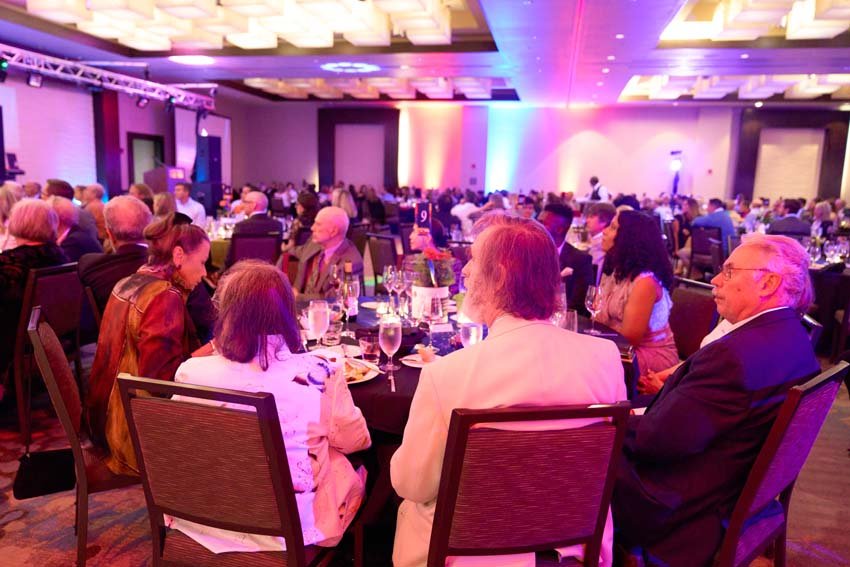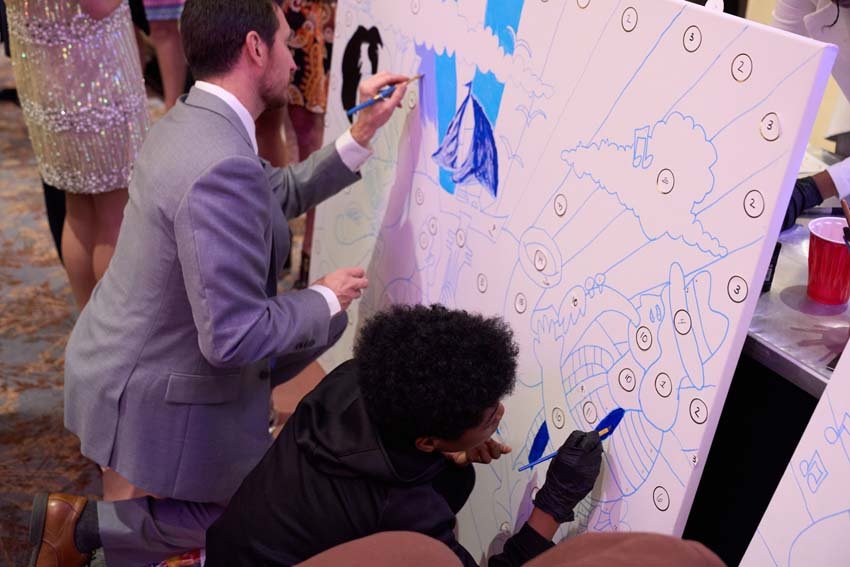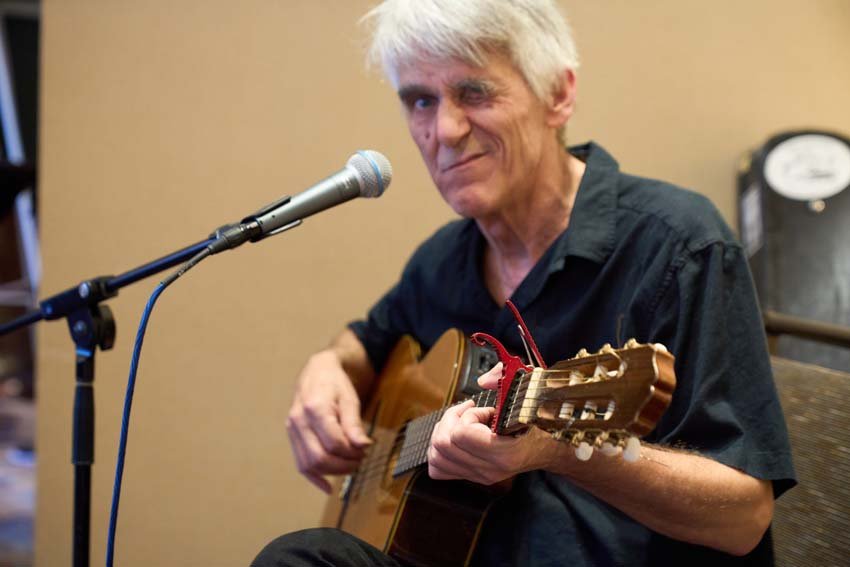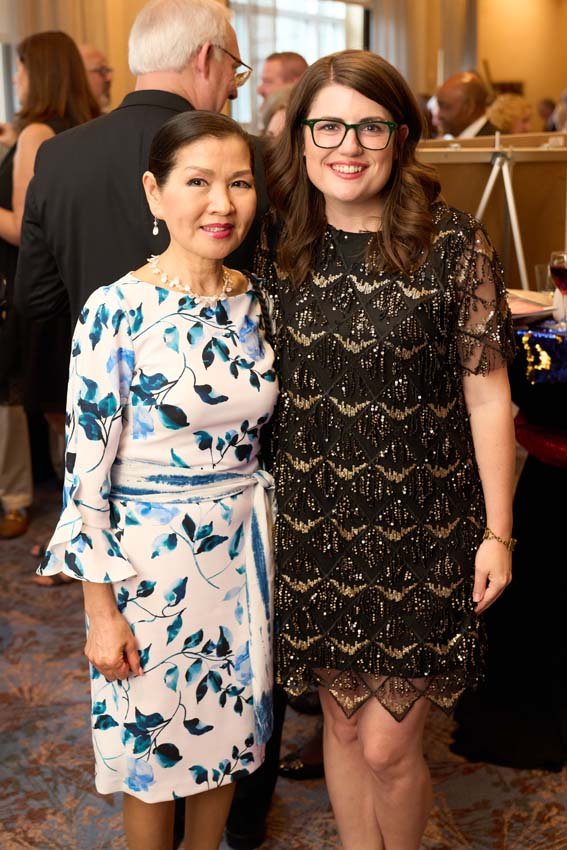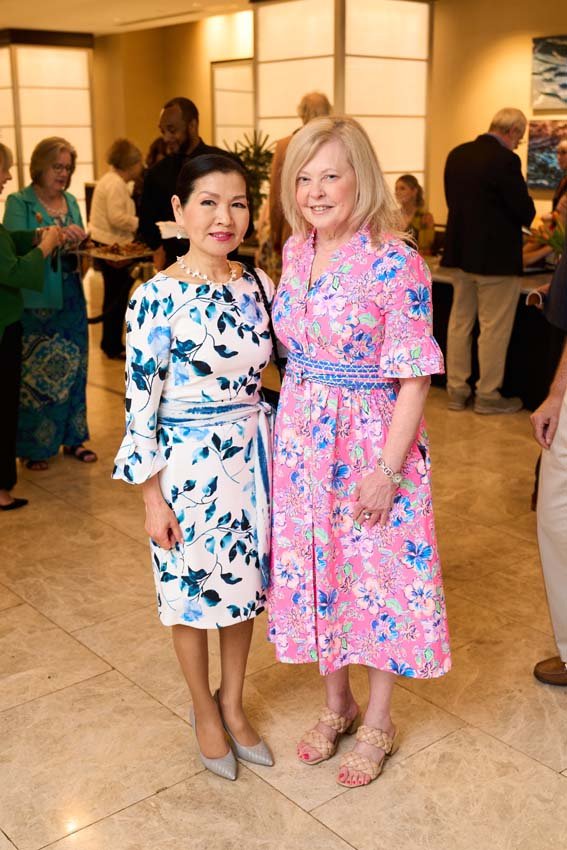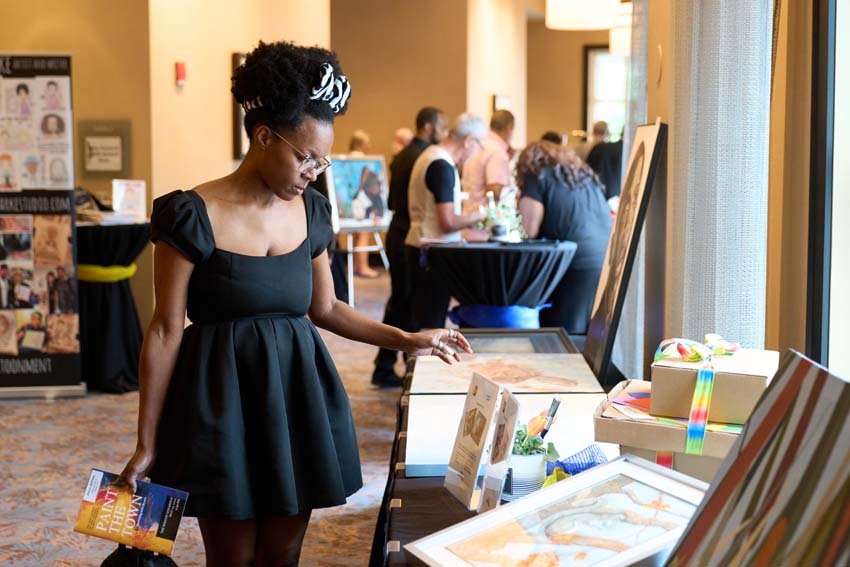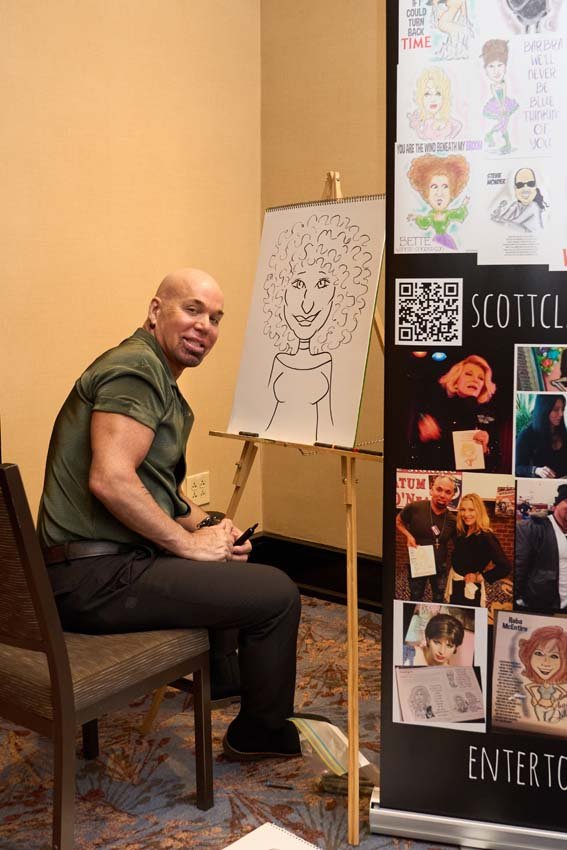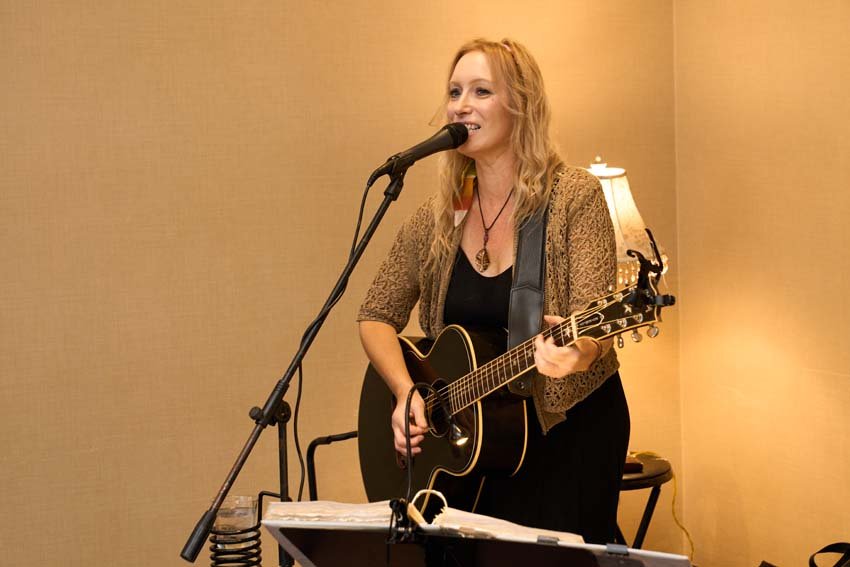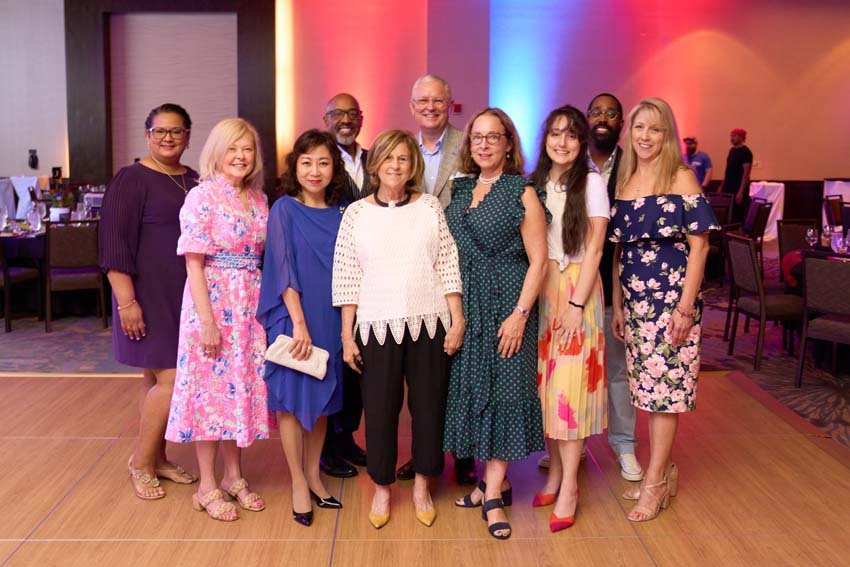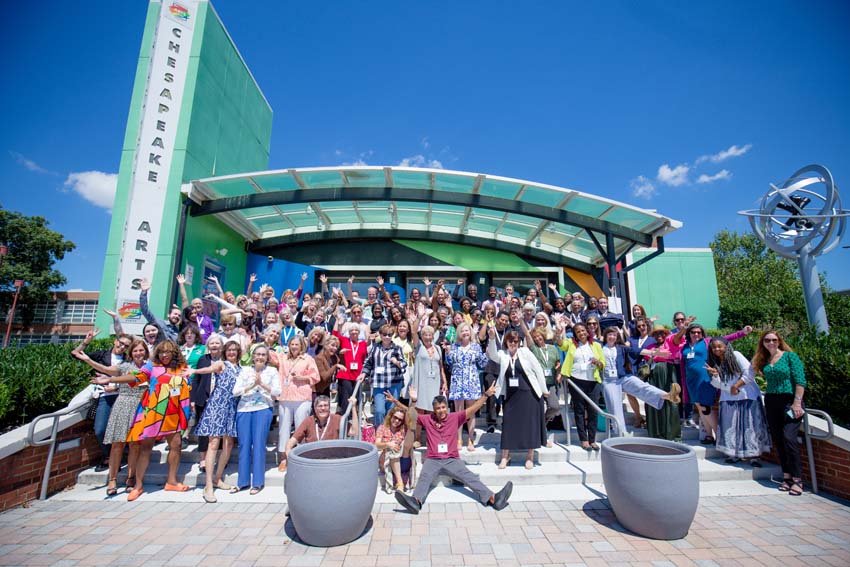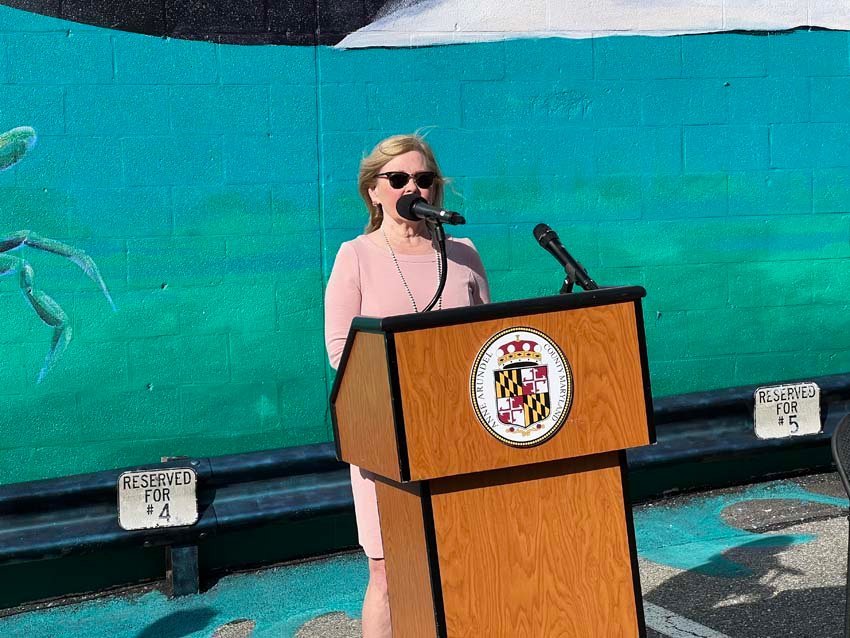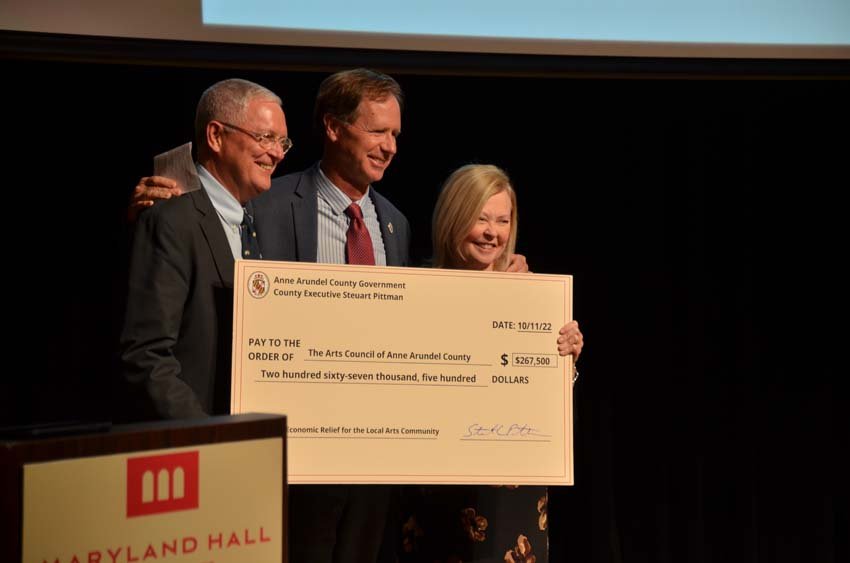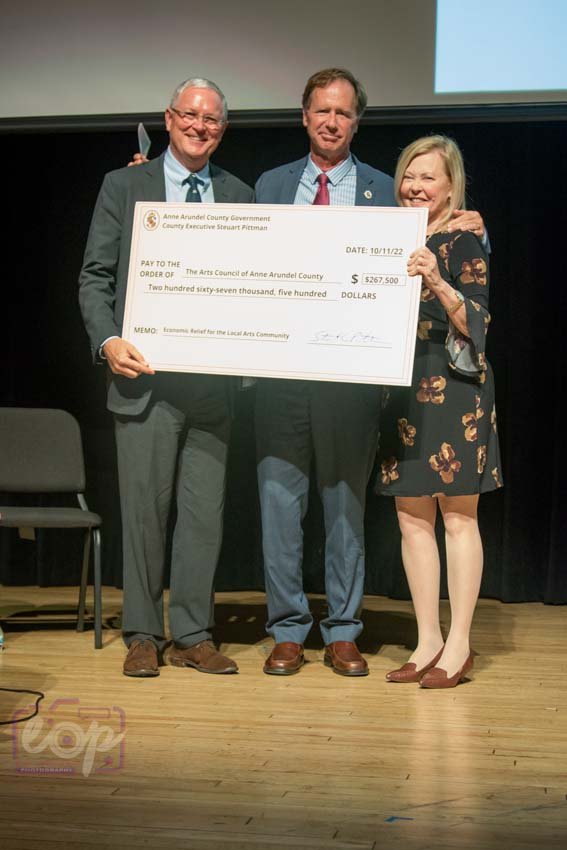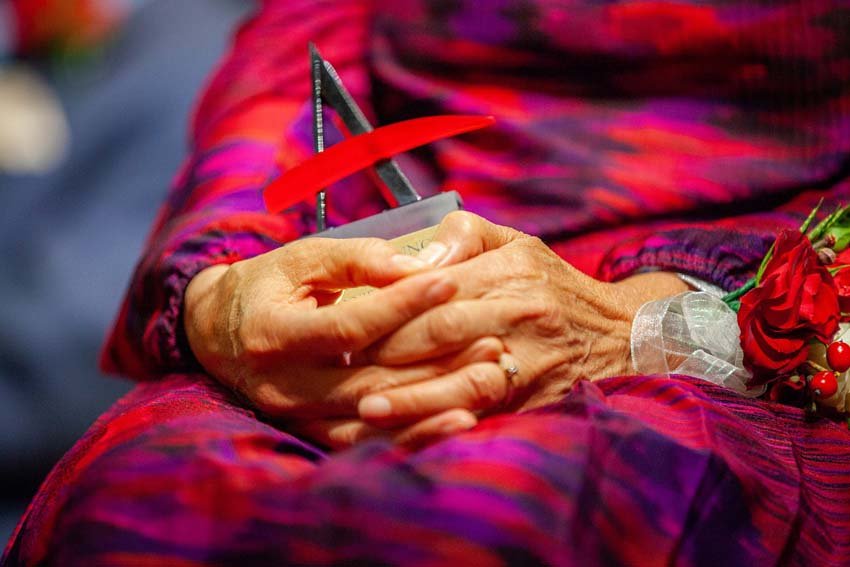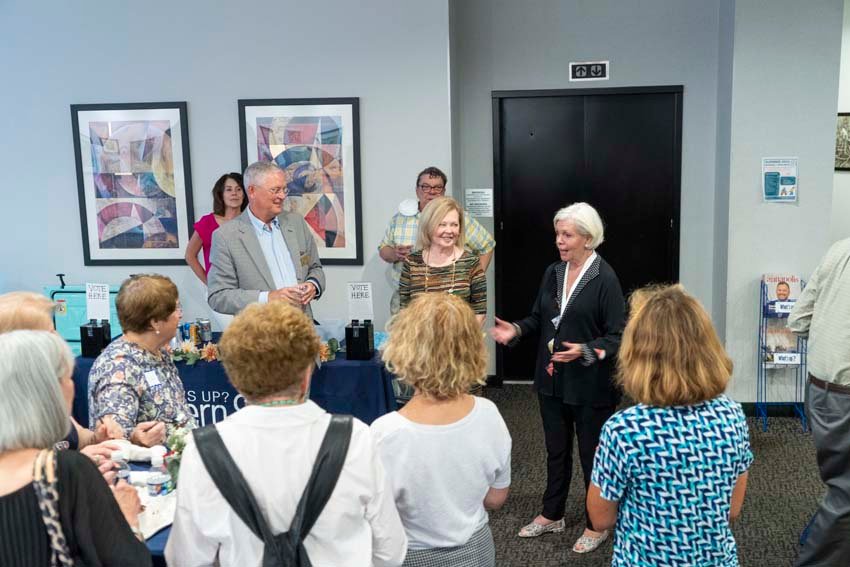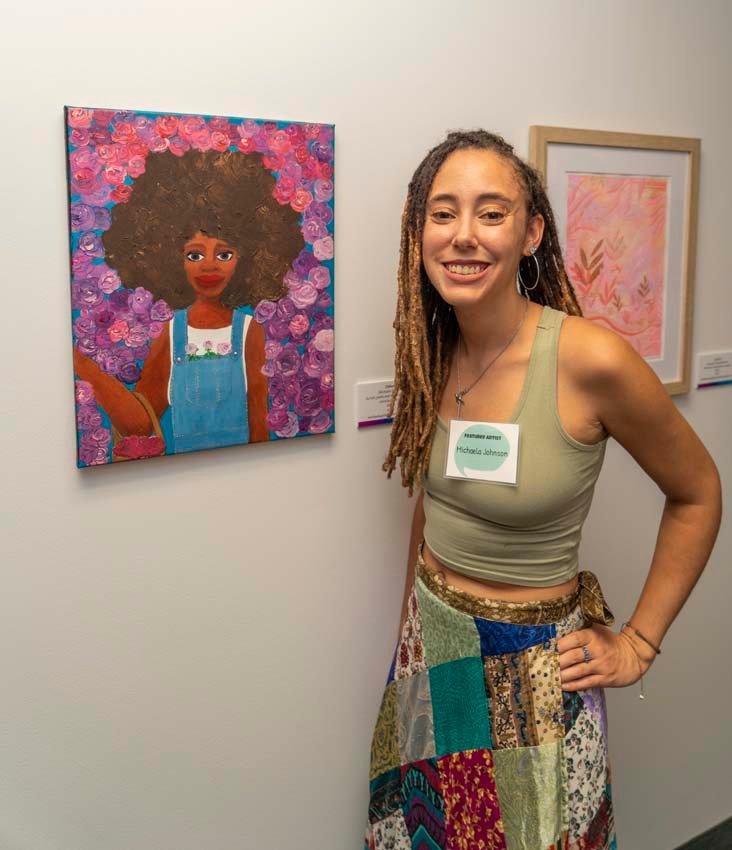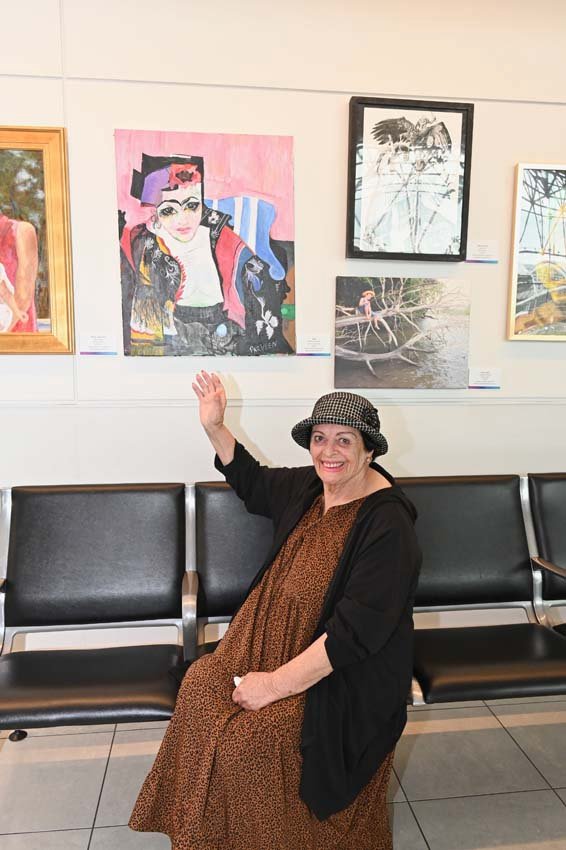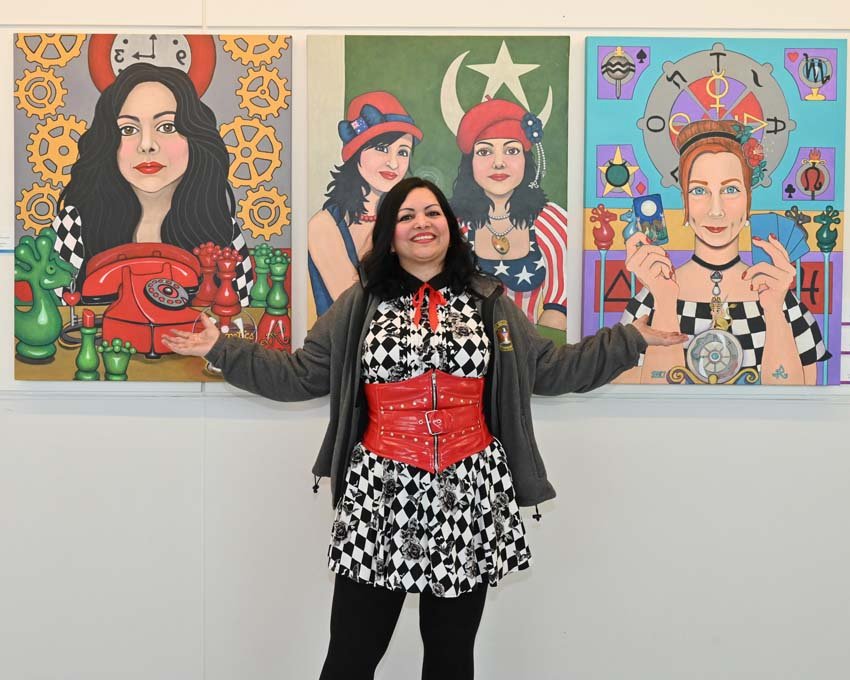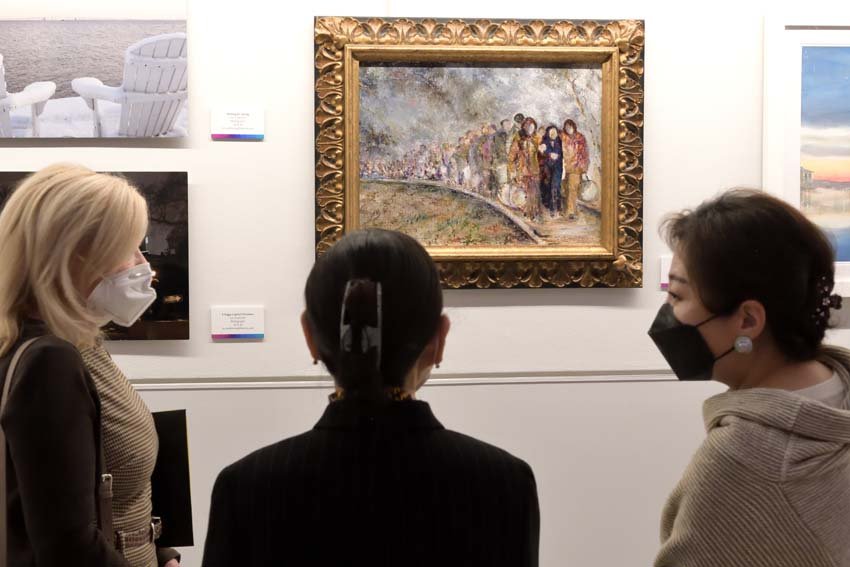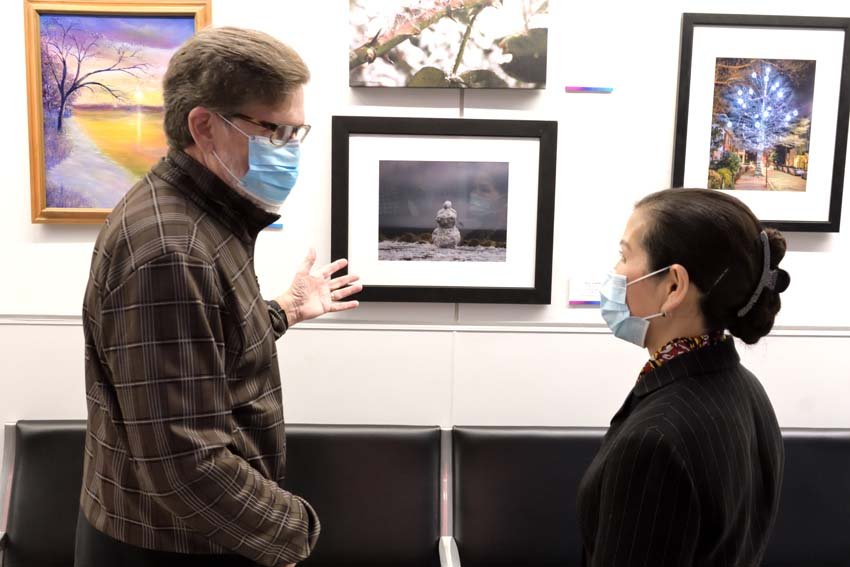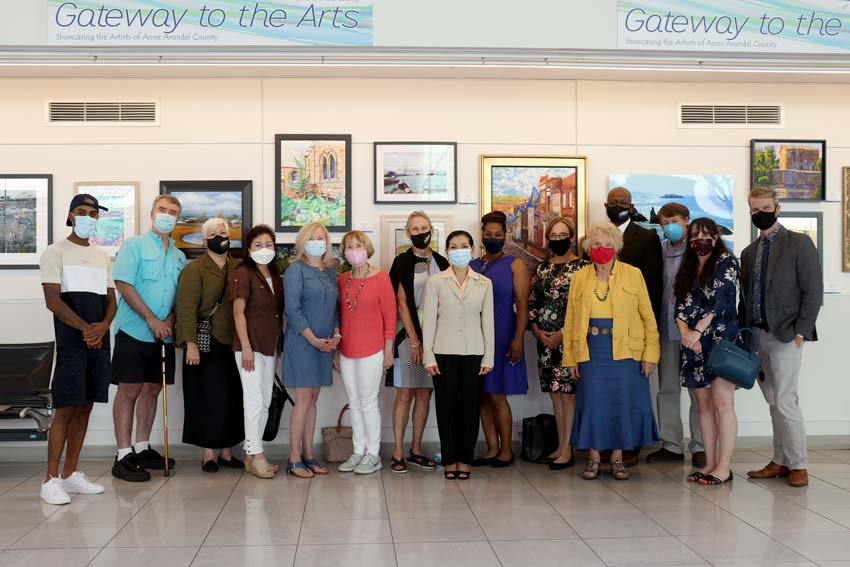+ By Leah Weiss + Photos courtesy of Arts Council of Anne Arundel County
April Nyman loves her job. “It’s an adventure every day. You meet so many people and you’re supporting the arts—there’s a joy in that,” she says. “To see everyone’s passion inspires me to do what I do.”
Her genteel manner hints at southern roots. Raised in Pensacola, Florida, Nyman lived all over the world before moving to New Orleans. “[That city] expands your view of the arts because everyone is an artist,” she says. “You just walk down the street and are surrounded by performance art, music, the culinary arts, fabulous museums . . . everything about their life is art.”
Moving to Annapolis in 2005, Nyman dived into the area’s arts scene. She’d worked in the corporate world and volunteered on boards, always gravitating to the arts. Since 2007, she has been executive director of the Arts Council of Anne Arundel County (ACAAC), a nonprofit established in 1992 with the mission to distribute funds to arts organizations and schools. Over the years, under Nyman’s leadership, in partnership with a committed, talented board, ACAAC has grown and become an engaged community presence.
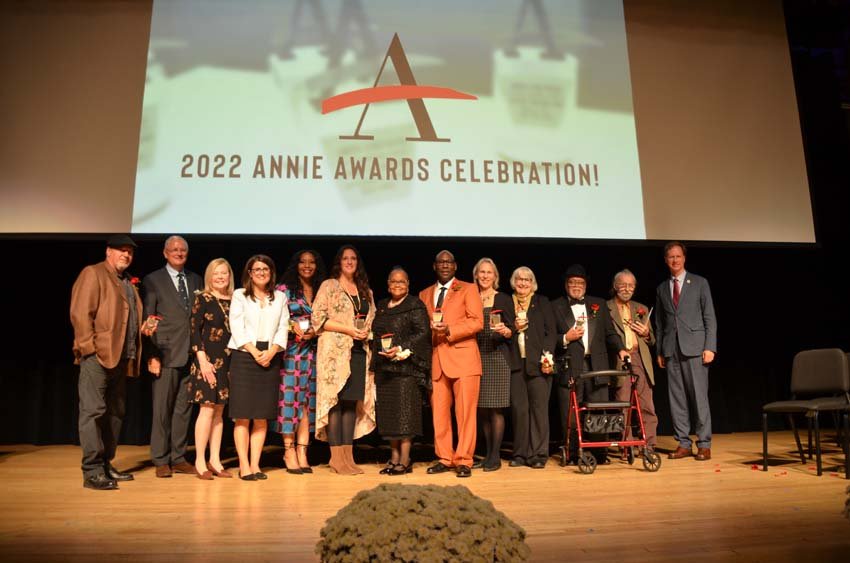
Generally, people focus on the products of artists and arts organizations, such as paintings, sculptures, murals, recordings, performances, exhibits, lectures, and classes. Less attention is given to the mundane efforts required for artists within the gig economy to make a living. Several European countries provide substantial artist stipends, residencies, and grants, but in the United States, such opportunities tend to be fewer, leaner, and more competitive.
Moreover, artists typically develop creative skills more than business acumen, and when confronted with forms, budgets, and other administrative tasks, many feel adrift. This is where ACAAC can assist—it can direct artists towards resources that can help as they develop their business plans. Nyman and staffer Tricia Sanborn routinely have planning discussions with arts organizations. “We want to be a resource for all,” says Nyman, “everyone’s welcome to walk in the door. We’ve talked to pro bono attorneys to get people set up, to find resources to help.” If an organization was floundering, she would select board members—all of whom volunteer their time—with particular skills to sit with that organization’s board, listen, and provide expert advice. “Every nonprofit is a small business. [They] have the artistic mind, but [they must also] find somebody—a board member, a staff member—that has the capacity so they also have stability in business,” she says, referring to planning, navigating financial records, and interacting with potential donors and patrons.
ACAAC’s main activity is providing yearly general operating grants to an impressive roster of nonprofit organizations—including Banneker-Douglass Museum Foundation, Historic Annapolis, London Town Foundation, and Maryland Hall and most of its resident companies—as well as founding grants, strategic grants, Arts in Education grants, Arts and Cultural Resources grants, and project-specific mini grants.
Until 2009, ACAAC’s funding came solely through yearly requests to the city and the county. When state Senator John Astle shepherded legislation to fund the Annapolis Visitors Center based on a percentage of the hotel tax, Speaker of the Maryland House of Delegates Mike Busch and Delegate Mary Ann Love (both deceased) successfully championed for ACAAC to be similarly funded. ACAAC also receives yearly grants from the Maryland State Arts Council and the state of Maryland, plus donations. The county generously provides office space at no cost, keeping overhead extremely low. Most of the money that comes in goes right back out.
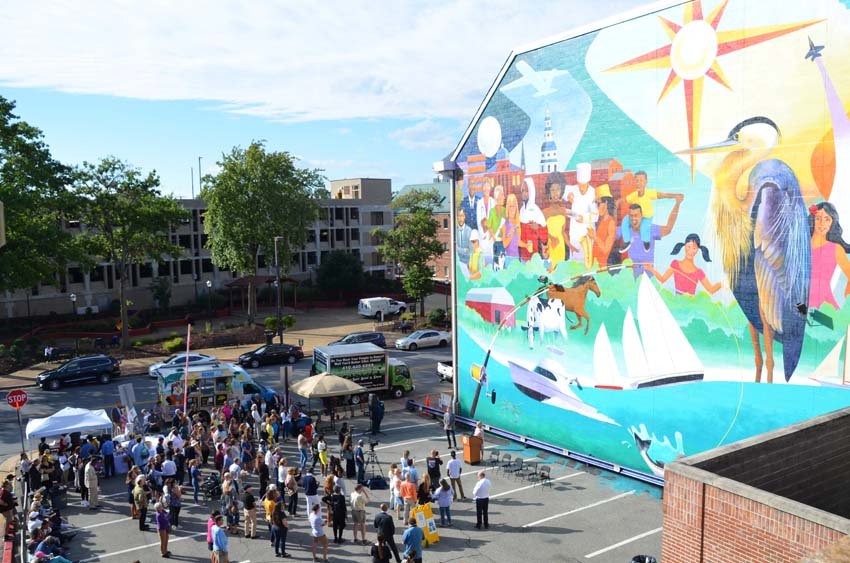
During the COVID-19 shutdown, ACAAC’s reach expanded considerably when the county executive’s office awarded funds it received through the Coronavirus Aid, Relief, and Economic Security (CARES) Act and the American Rescue Plan Act (ARPA). Nyman, encouraged by the county to think big, asked for $1 million in 2020, and her request was accepted. These funds could also go to individual artists and for-profit arts organizations. “My career disappeared,” says Annapolis musician Jonathan Stone of the shutdown of performance venues, “I received assistance from multiple sources. Tricia [Sanborn] at ACAAC was extra solicitous and helpful.”
With the federal money came new reporting requirements and more applications. ACAAC’s grants committee, composed of board members, typically reads 45 operating grant applications and 40 mini grants per year. Suddenly, applications flooded in from over 100 individual artists, a slew of arts organizations, and for children’s scholarship requests. “People were really pretty desperately in need of funds,” says board and grants committee member Lucy Spiegel. “I think it was one of the most worthwhile things we could do, to make sure that the artists had what they needed to continue their art and thus continue taking care of their families. We always make a difference, but particularly during COVID, we made a big difference.”
“It was such a gift, not only to distribute the money, but to get to know [the artists],” says Nyman, “and we want to keep that connection.” She successfully advocated for those funds for two more years. “They lived on credit cards during the pandemic, they still have a lot of bills to pay,” she explains. “It’s not a stable world for them, yet.” To secure this year’s funding, she adamantly presented her case, stating, “The arts need it!”
Matt McConville, founder and president of Annapolis Musicians Fund for Musicians, is impressed with the staff’s professionalism and dedication. “They are keenly interested in knowing what’s happening in the field,” he says. “They want to stay connected and understand professional artists’ struggles on the ground and incorporate that into their policies. There’s a great respect for the artist, and compassion—without a whiff of pretention; that’s what drew me to them and why I’ve developed a great relationship with them.”
When she started at ACAAC, Nyman’s goals were to grow the budget and build a board of diverse leaders with a vision, and she’s achieved both. “It takes years to build a board,” she says, “it’s not something that you do overnight.” Says Spiegel, who had a career in the news business and helps produce ACAAC’s yearly Annie Awards, “[The board] is a great group. You have your business people, people who are artists, people who run arts organizations or know how to run arts organizations, and it’s just a splendid mix who are determined to get things done in the county when it comes to the arts.” Board members serve for three years, and many don’t want to leave when their terms expire.
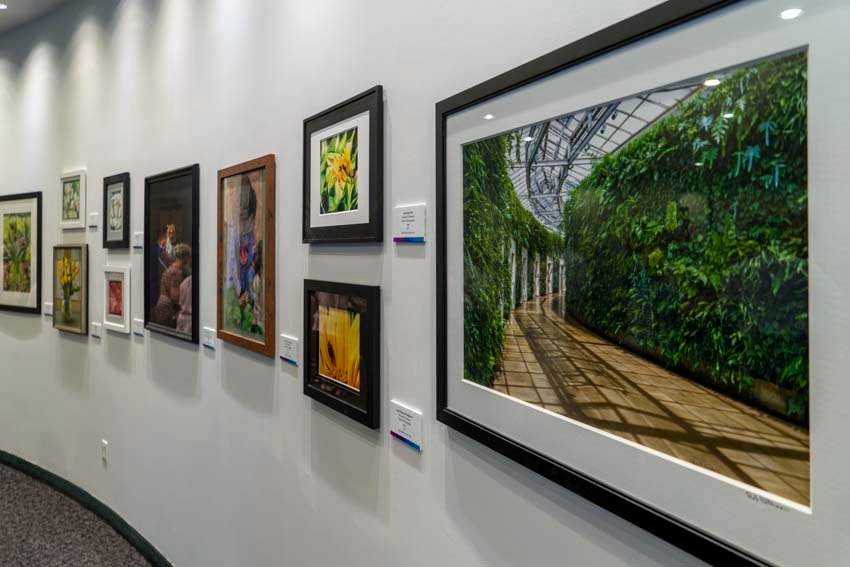
While most of ACAAC’s funding goes to Annapolis-based recipients, Nyman has her sights on West Anne Arundel County. “They have just a few organizations out there,” she says, “but they are so talented and need help.” Much will be behind-the-scenes work. Perhaps the county will help identify a vacant building, then they might work with artists to develop a plan and with businesses to bring things to the area. “These types of things have to come from the artists. It can’t be business-driven,” she explains.
ACAAC now has a strong social media presence. A weekly calendar keeps the community abreast of all thing art. Its Instagram bio reads, “Representing and supporting the artists of Anne Arundel County by making creative history.”
“It’s proven, over history, time and time again,” says Nyman, “art is good for our souls, good for everyone.” █
For more information,
visit acaac.org.
